Sitting high on its hilltop perch overlooking the sweeping green of the Umbrian Valley, pretty Perugia is one of Italy’s most attractive small cities. Its medieval center begins on Corso Vannucci, a lively street of bars and restaurants, and winds downwards, a contorted web of ancient alleyways, tiny piazzas and historical relics. Strolling through Perugia’s jumble of streets, touches of art and history harken back to its founding. Established by the Etruscans, its story pre-dates the Roman Empire. Look closely and the remnants of ancient civilizations can still be seen in magnificent arches, aqueducts and crumbling town walls.
Elegant and energetic, Perugia’s large student population gives it a verve sometimes missing in other regional cities; as dusk descends, cafes and bars swell and people spill out into the streets and squares, while roving musicians provide the soundtrack to Perugia’s nightlife. Each summer, a world-class jazz festival draws music lovers from across the world, as Perugia’s medieval squares and churches transform into atmospheric venues for iconic acts.
Whether a stop on a longer journey through Umbria’s rural beauty or a weekend city break, Perugia is well worth a spot on your itinerary.
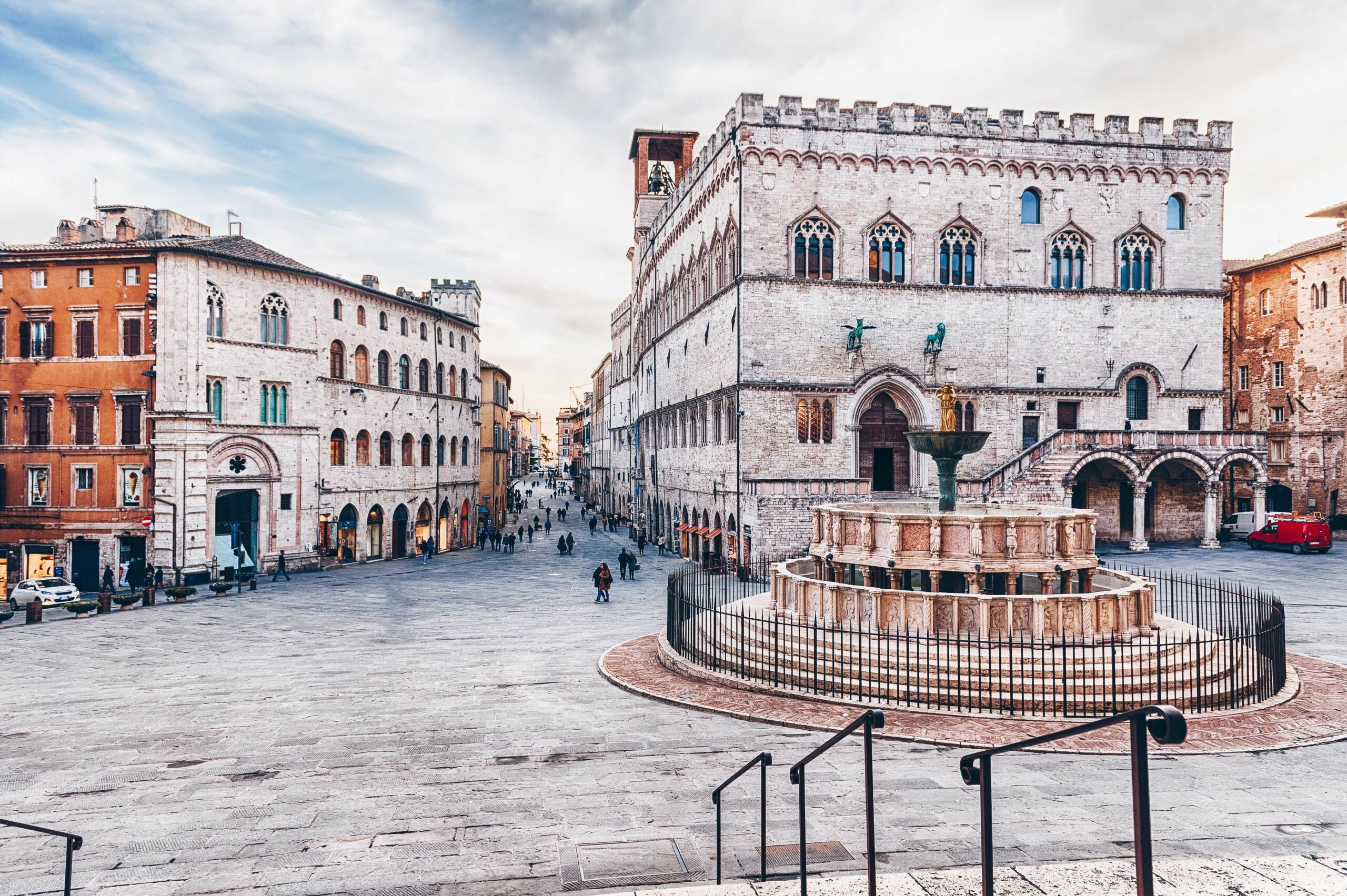
Eat
Umbria is truffle country. Its vast woodland is crawling with hunters aided by hounds, scouring and searching for these flavor-packed little delicacies. As a result, truffles top some of the region’s tastiest signature dishes: pastas, pizzas, even ice cream—you’ll find them everywhere. Walk around Perugia’s historic center a while and it won’t be long before the smell, an earthy, garlicky aroma, tempts you into a restaurant, artisanal deli or specialist truffle shop.

Al Tartufo, hidden away behind the Cattedrale San Lorenzo (the Duomo), is Perugia’s go-to for all things truffles. Run by the Giudici family, father Marco has been hunting truffles most of his life and brings his vast expertise to the table in elegant style. Try the strangozzo vera carbonara, Al Tartufo’s take on an Umbrian pasta classic.
For something a little more casual, head to Il Bacio. This lively pizza place takes up a prime spot on the Corso Vannucci, medieval Perugia’s main central street. Their colossal menu spans all corners of Italy, but there’s plenty of local specialities to choose from. Try the Norcina, made with Umbria’s much-celebrated pork sausage, or tartufo bianco, a white pizza (made without tomatoes) topped with black truffle.
Be sure to head for a sundowner at Ristorante del Sole’s Caffe Living cocktail bar. The bar’s terrace has one of the best views in Perugia, looking out over the green, rolling Umbrian landscape. After, head down to Zenoteca, an intimate side-street wine bar with a mostly local crowd. Umbrian classic Grechetto, an aromatic white wine, is always a winner.
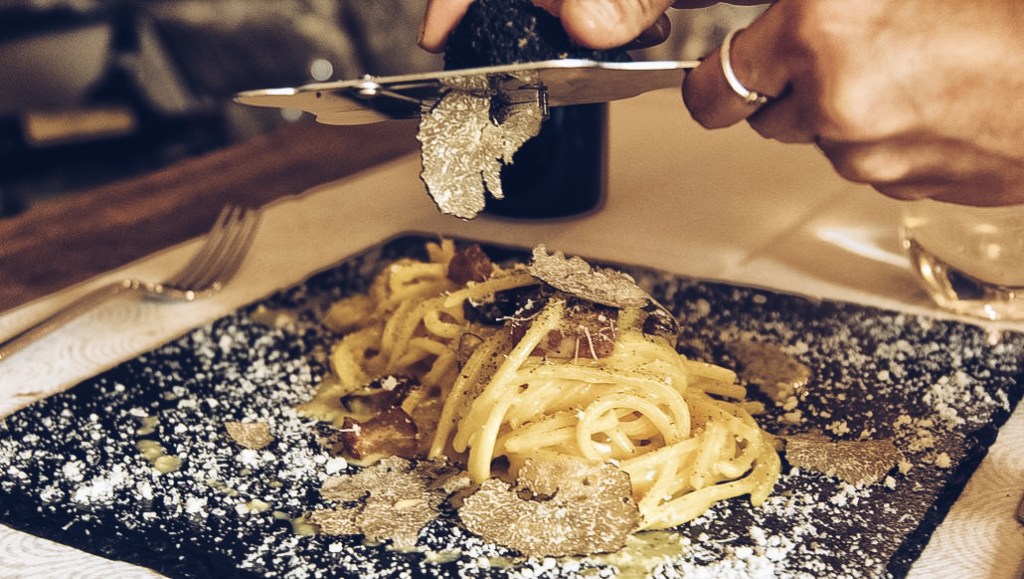

Play
Start your trip in Perugia’s spectacular main square, Piazza IV Novembre, surrounded by some of the city’s oldest and finest architecture, including the imposing gothic Duomo and Fontana Maggiore, a masterpiece of sculpture sitting at the centre of the square.
Opposite the Duomo, you’ll find the magnificent Palazzo dei Priori, Perugia’s grand commune (town hall). Dating back to the 13th century, it’s one of the city’s best-preserved medieval buildings, notable for its striking castle-style gothic façade. Inside, Galleria Nazionale dell’Umbria holds the finest collection of Umbrian art in Italy. The collection is mostly dedicated to mediaeval and Renaissance works, with Perugino, Pintoricchio, Caporali, Bonfigli and di Lorenzo featuring heavily.
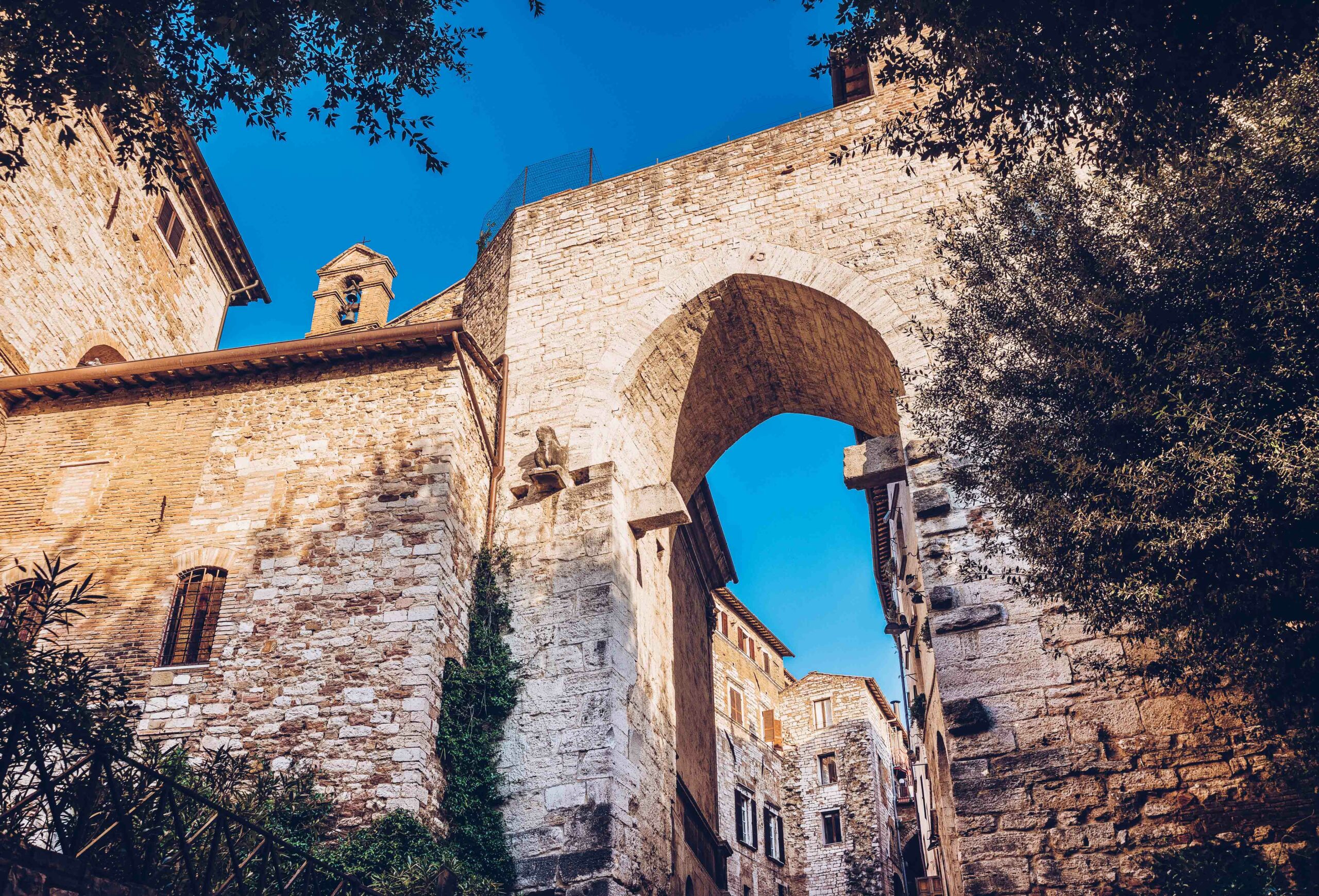
Just behind the Piazza IV Novembre, make time for the “Etruscan Well,” a remarkable feat of engineering dating back to the third century BC. Descend down into the well, some 10 metres below street level—a modern footbridge allows you to stand in its main chamber. Perugia was a key Etruscan city, with roots dating as far back as 300 B.C. One of Italy’s oldest civilizations, the Etruscans ruled over much of what is now Tuscany, Umbria and Lazio until they were absorbed by the Roman Empire in 27 A.D. For more insight into the ancient world of the Etruscans, head over to the National Archaeological Museum of Umbria which contains an important collection of artifacts, including the Etruscan bronzes of San Mariano.
Sticking with the underground theme, venture to the Rocca Paolina, a subterranean fortress lying beneath the southern part of Perugia’s old town. Built in the 1500s under the rule of the papacy, the fort symbolizes the city’s fall as an independent state as it was finally absorbed by the Papal States. Today, its cavernous passageways are used for events and exhibitions – don’t miss the 3D video experience which tells the city’s story in dramatic, immersive fashion.
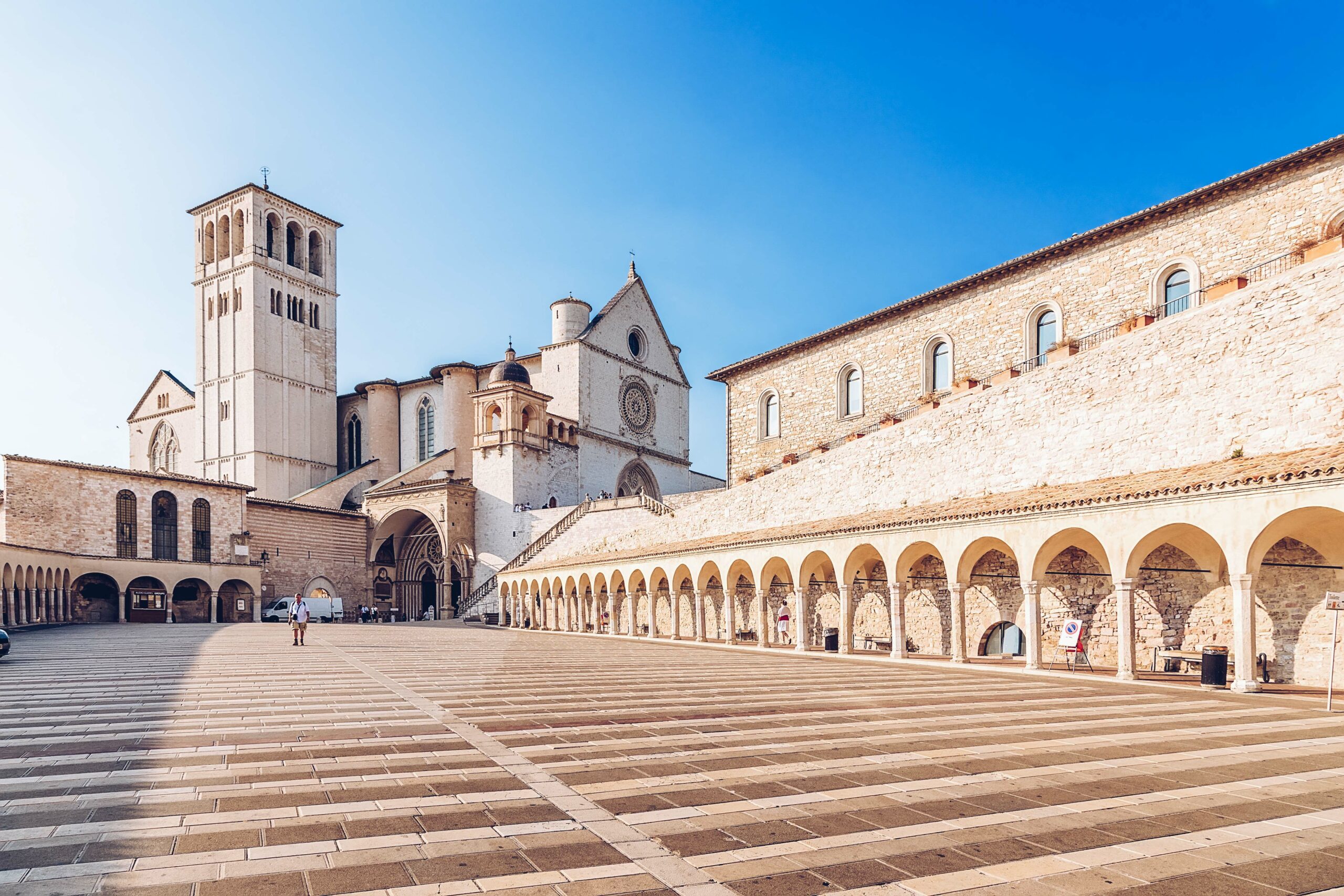
Only 20 minutes away by train, the medieval hilltop town of Assisi is well worth the trip for its incredible basilica alone. Built in 1228 in honour of the legendary St Francis, the church is split across two levels, the Basilica Superiore, a gigantic hall of intricate frescoes, and the Basilica Inferiore, a beautifully painted nave connecting five smaller chapels. The basilica’s gothic façade, towering before a backdrop of Umbria’s sweeping central valley, is easily one of Italy’s greatest sights.
Stay
Locanda Della Posta
Set in the heart of Perugia’s medieval center, Locanda Della Posta puts you within easy walking distance from the city’s main sights, including the Duomo, Galleria Nazionale dell’Umbria, the underground city and the Etruscan well. Modern in contrast to its storied history (the hotel dates back to 1786), the rooms are simple and elegant, furnished in muted tones.
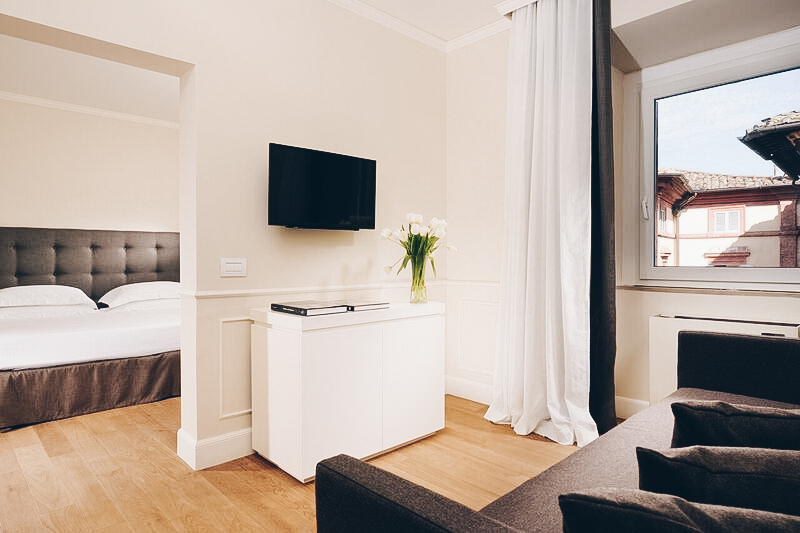
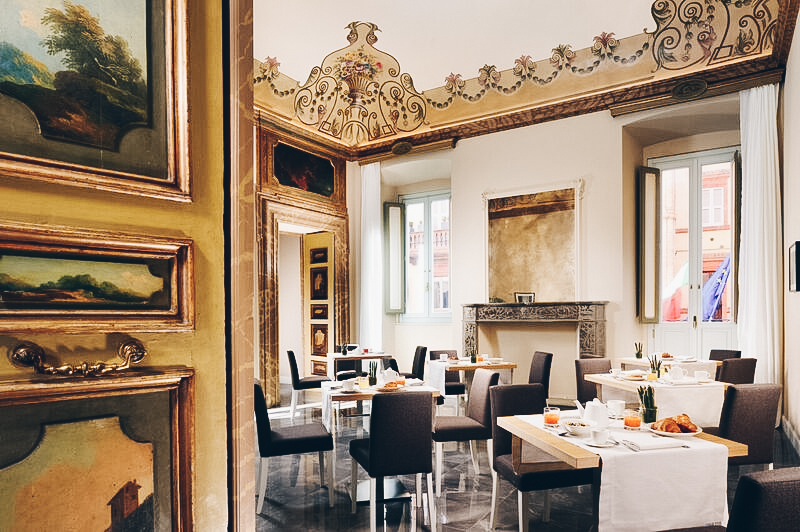
Sangallo Palace Hotel
This elegant four-star hotel offers a taste of the royal life without the King-sized price tag. A contemporary take on the classic Italian palazzo, the hotel’s interior was designed by Italian architect and designer Luca Scacchetti, with the rooms decked out in subtle retro style. The hotel’s terrace has spectacular views of the rolling Umbrian hills that surround Perugia.


